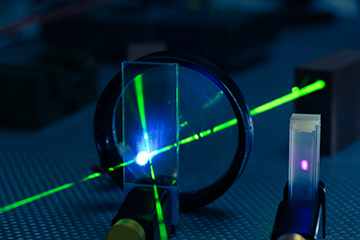
[Image: Getty Images]
Over the course of the past several weeks, a number of companies in photonics products and engineering have reported quarterly earnings. And a common theme has emerged from the various company filings: For the moment, at least, photonics demand seems to be very healthy indeed.
In addition to the recently reported fiscal 2021 earnings of Trumpf Group—which saw a 19.7% gain in orders to record-breaking levels—a range of companies marketing lasers and other photonic product lines sported double-digit gains in orders as a prominent feature of their earnings releases. And, in light of those results, managements generally struck an upbeat tone about prospects for the year ahead—though supply-chain issues pose an ongoing challenge in meeting the strong customer demand.
II-VI Inc.: Bookings up 43% year to year
On 9 November, for example, the global photonics firm II-VI Inc. reported that it had logged revenues of US$795 million in its first fiscal 2022 quarter (ended September)—a respectable 9% year-to-year gain. Meanwhile, bookings during the quarter ballooned by 43% year to year, to a record US$939 million, putting the company’s backlog at a record US$1.4 billion by the quarter’s end.
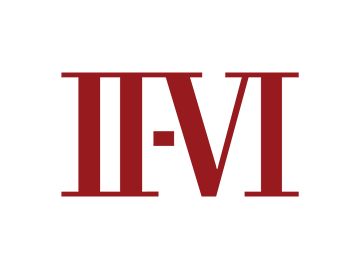
The II-VI CEO, Vincent D. Mattera Jr., maintained in a company press release that the firm’s performance reflected “year-over-year growth in virtually all our end markets.” Mattera highlighted in particular strong gains from the industrial business, which booked a 50% year-to-year revenue gain, and in the high-speed datacom and telecom segment, which was up some 70%.
Mattera also struck a bullish tone on the firm’s still-to-be-completed merger with Coherent, for which II-VI emerged as the victorious suitor in an acrimonious bidding war during the first calendar quarter of 2021. The company’s teams planning for the integration are said to be “fully engaged,” and the process of getting regulatory approval in China kicked off in September.
II-VI now expects the transaction to close sometime in the first calendar quarter of 2022—a bit later than the previous target of year-end 2021. Nonetheless, said Mattera, “we are even more excited about this transaction than we were six months ago.”
Lumentum: Strong demand; supply-chain issues
Elsewhere, Lumentum—one of the losers in the early-2021 bid to acquire Coherent—reported revenues of US$448.4 million for the first quarter of fiscal 2022 (ended 2 October 2021). That number, while up 14.4% quarter to quarter and ahead of the company’s previous guidance, actually represented a slight year-to-year decline.
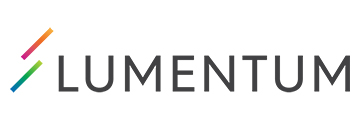
In particular, Lumentum apparently has been hit by supply-chain-driven semiconductor shortages in its telecom and datacom product lines, which led to a 5.3% year-to-year decline in optical-communications revenues, despite strong customer demand. The company’s laser segment took up the slack, however, with healthy demand driving a 77.4% year-to-year jump in that segment’s business.
Looking ahead, Lumentum’ president and CEO, Alan Lowe, said in a company press release that it expected strong demand to continue in the second quarter across Lumentum’s telecom, datacom and commercial-laser product lines. He suggested, however, that while the semiconductor picture is improving, supply-chain issues might still hold back results in some business lines.
Separately, Lumentum also announced in early November that it had reached an agreement to acquire NeoPhotonics Corp., in a deal valued at around US$918 million. The deal—which now requires regulatory and shareholder approval, and will likely close in the second half of calendar 2022—specifically aims at expanding “Lumentum’s opportunity in some of the fastest growing areas of the more than $10 billion market for optical components used in cloud and telecom network infrastructure.”
IPG Photonics: Fiber laser demand shines
Strength in lasers also benefited the fiber laser firm IPG Photonics. Demand in the United States and Europe, according to the company, helped drive a 19% year-to-year gain in revenues in the third calendar quarter of 2021 and a 27% gain in the first nine months. Operating income, meanwhile, surged 146% year to year in the 2021 third quarter and 112% for the nine months. The sales and earnings performance prompted a significant one-day jump in the company’s share price on the news.
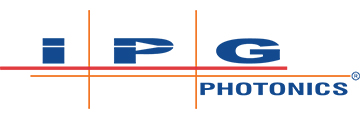
The firm’s CEO, Eugene Scherbakov, attributed the strong quarterly showing to IPG’s “increasing geographic and product diversification,” noting growth in demand for welding applications and for “emerging products and applications, such as foil cutting, cleaning, 3D printing, drilling, medical and solar cell applications.” Looking ahead, Scherbakov said IPG is targeting growth in products for the electric-vehicle manufacturing segment, the medical market, handheld and ultrafast lasers, and “many other opportunities.”
That said, the company cautioned that it has seen “significantly softer demand” in one area in particular: cutting applications in the China market—softness that led to a slight year-to-year decline in sales of high-power continuous-wave lasers. Thus management is suggesting a cautious outlook for the fourth quarter of the year, with a slight reduction in revenues relative to the unusually strong third quarter.
Jenoptik: Orders and acquisitions contribute to gain
Strong demand likewise empowered results for the international photonics conglomerate Jenoptik. The firm’s three photonics divisions—Light & Optics, Light & Production, and Light & Safety—reported a blistering 49.0% increase in order intake, to €761.0 million (US$865.2 million) for the first nine months of 2021, and a 42.8% year-to-year order increase in the third calendar quarter. As of the end of the quarter, Jenoptik’s backlog stood at €616.8 million, up 34.1% from year-end 2020—which, a company press release dryly noted, “leaves Jenoptik confident of its future prospects.”
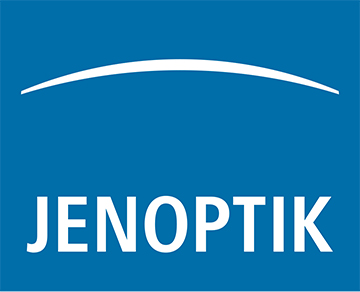
The strong order activity helped push Jenoptik to a 24.9% year-to-year revenue gain in the third quarter and a 20.6% gain, to €609.2 million, for the nine months. Part of the gain also came from the revenue contribution of Trioptics, the acquisition of which was completed only at the end of September 2020, and which contributed €67.1 million in revenues for the Light & Optics division.
Indeed, Light & Optics—which focuses on sales of photonically enabled products to OEMs in semiconductor equipment, laser material processing, healthcare and other areas—was responsible for virtually all of the company’s recent revenue gains, with a 52.6% increase in nine-month sales. Light & Manufacturing, which is heavily tied to the automotive market, saw a comparatively muted sales gain of 4.3%. Supply-chain delays for electronic components, meanwhile, have held back results for the Light & Safety division, the smallest of the company’s three photonics-related units, which saw revenues decrease substantially for the nine months.
In a separate release in mid-October, Jenoptik announced that it had reached agreements to acquire Berliner Glass Medical, a supplier of custom optical components for medical technology, and SwissOptic, a developer of components and assemblies for medtech, semiconductor makers and metrology, for a total cost of €300 million. Jenoptik’s president and CEO, Stefan Traeger, said that the deal “will strengthen our global photonics footprint and further accelerate growth”—particularly in the semiconductor and medical arenas and in the Asia market.
